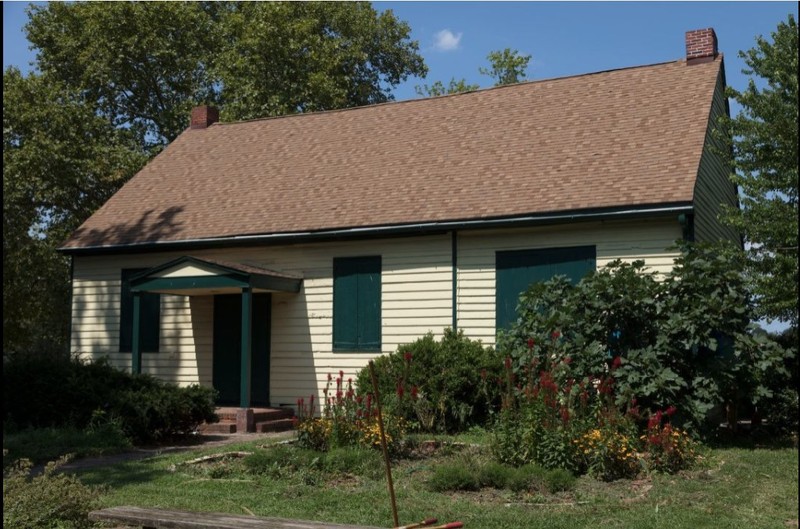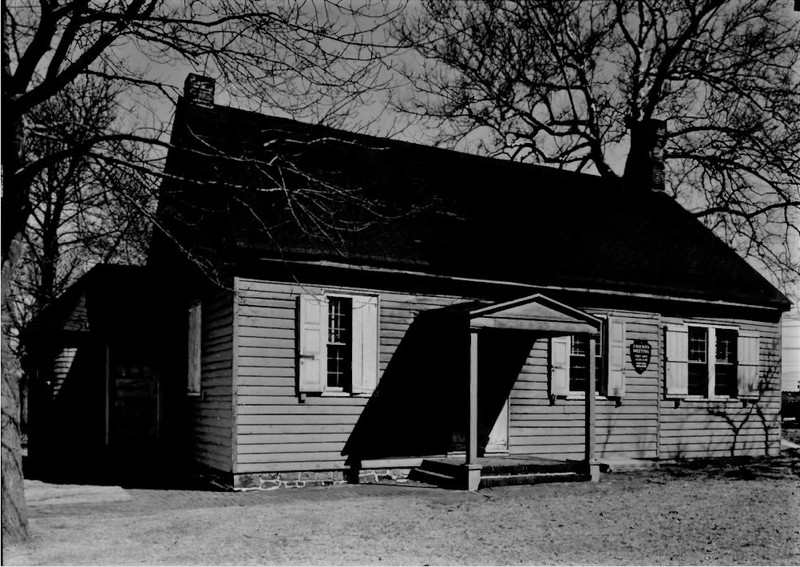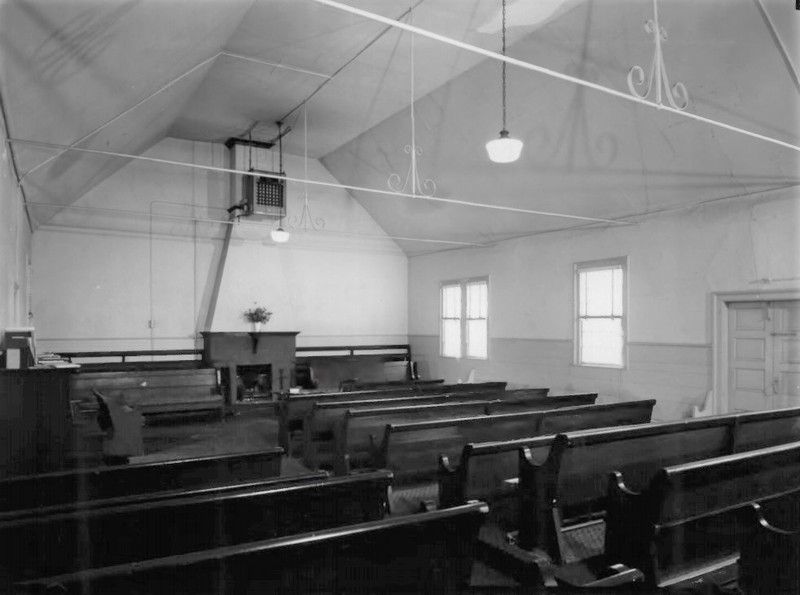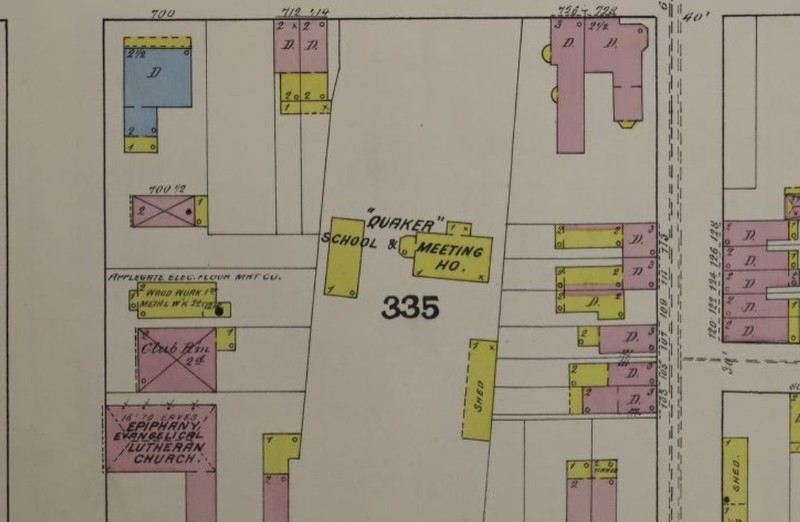Newton Friends' Meetinghouse
Introduction
Text-to-speech Audio
Images
Entrance and flowerbeds in front of Meetinghouse in 2017 photo by Carol M. Highsmith

Exterior of Newton Friends Meetinghouse in 1970 photo, facing northeast (Jack E. Boucher)

Interior of Newton Friends Meetinghouse in 1970, facing southeast to front of church (Boucher)

Former location of Meetinghouse & School on 1891 map of Camden (Sanborn p. 20)

Backstory and Context
Text-to-speech Audio
The Society of Friends ("Quakers") trace their history in Camden back to its early days, when the town was known as Cooper's Ferry in the 1680s. William Cooper, who founded the town in 1679 was an "English convinced Quaker." The Newton Meeting was established in 1682. The first local meeting house was built near Newton Creek in what is now West Collingswood; this structure burned down in 1817. A brick meetinghouse had been constructed in 1801 at Mt. Vernon and Mt. Ephraim Avenues, and became the first church built within Camden. That building stood until 1950 and its graveyard still is there. A division of the Quakers resulted in the formation of two groups: Orthodox and Hicksite. The Orthodox group claimed the brick meetinghouse and the Hicksite group built their own meetinghouse in the 1820s (the subject of this entry).
The Newton Friends' Meetinghouse originally was built in 1824 on a lot in the middle of the 700 block of Cooper Street, on the south side of the street. Construction was under the supervision of two of the Quakers who would meet there: Joseph Kaighn and Edward Bullock. Joseph W. Cooper, a non-Quaker, donated the wooded lot. The wood frame building was then one story tall, 31 feet by 28 feet, on a limestone foundation, with an attic space. The building's footprint was enlarged in 1885; the building was extended 14 feet to the east over a new basement containing a furnace, The exterior was clad in regular width clapboarding. A small library wing of 8 by 11 feet was added to the north end of the building (the long side of the building closest to Cooper Street). The attic was removed and iron tie rods were added to the interior truss space to create a single interior main room. An entrance vestibule of 9 by 10 feet also was added to the building's west end. It has been proposed that the renovations were done by the well-known architect Wilson Eyre, Jr., because he was building a house down the street in this time period for Dr. Henry Genet Taylor (also a Clio entry).
The property also included a separate building used as a Quaker school, to the west of the meetinghouse; the wood frame, rectangular building was one story tall, with the short side facing Cooper Street. Prior to its construction around 1850, school was held in the meetinghouse. The school building was enlarged around 1870. There was a third building on the lot by the 1880s: a one-story, wood frame, open-air shed along the east lot line, to the rear of the meetinghouse. A fourth outbuilding stood by 1906, a small wood frame building directly north of the school. By the early 1970s, a space heater near the fireplace at the east end of the building replaced the older furnace.
The current congregation of Quakers meets twice per month in the meetinghouse. The group has "no formal creed" and worship is unprogrammed, "based on silent seeking for the Inner Light in a communal setting." The garden surrounding the building includes peach and fig trees and vegetables that are donated to Camden's poor. Residents of a local halfway house run by Volunteers of America, Garrett House, maintain the garden and property on Saturdays as part of their community service.
Sources
Newton Monthly Meeting Religious Society of Friends. History of the Newton Meeting, About Us. Accessed January 5th 2021. https://newtonmeetingcamden.org/about-us/history-of-the-newton-meeting/.
Sanborn Map Company. Insurance Maps of Camden, Camden County, New Jersey. Sanborn Map Company, New York, New York. 1891.
Sanborn Map Company. Insurance Maps of Camden, Camden County, New Jersey. Sanborn Map Company, New York, New York. 1906.
Teitelman, Edward. A Queen Anne Quaker Meetinghouse: Newton Meeting, Camden, New Jersey. Quaker History, vol. 55(2)104 - 110. Published April 4th 1966.
Teitelman, Edward. NRHP Nomination of Newton Friends' Meetinghouse. National Register. Washington, DC. National Park Service, 1970.
Carol M. Highsmith Archive, Lib. of Congress, https://www.loc.gov/resource/highsm.45246/
https://npgallery.nps.gov/AssetDetail/NRIS/71000498
https://npgallery.nps.gov/AssetDetail/NRIS/71000498
https://www.loc.gov/item/sanborn05436_002/
